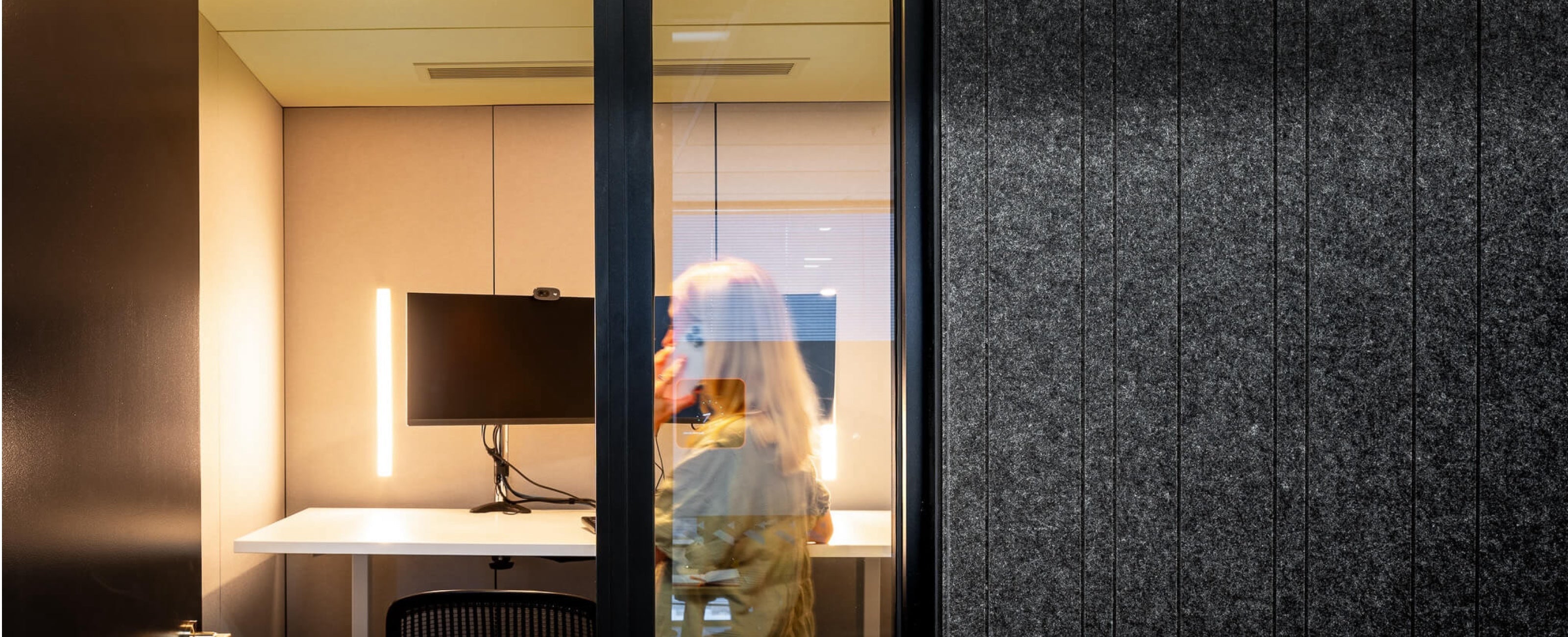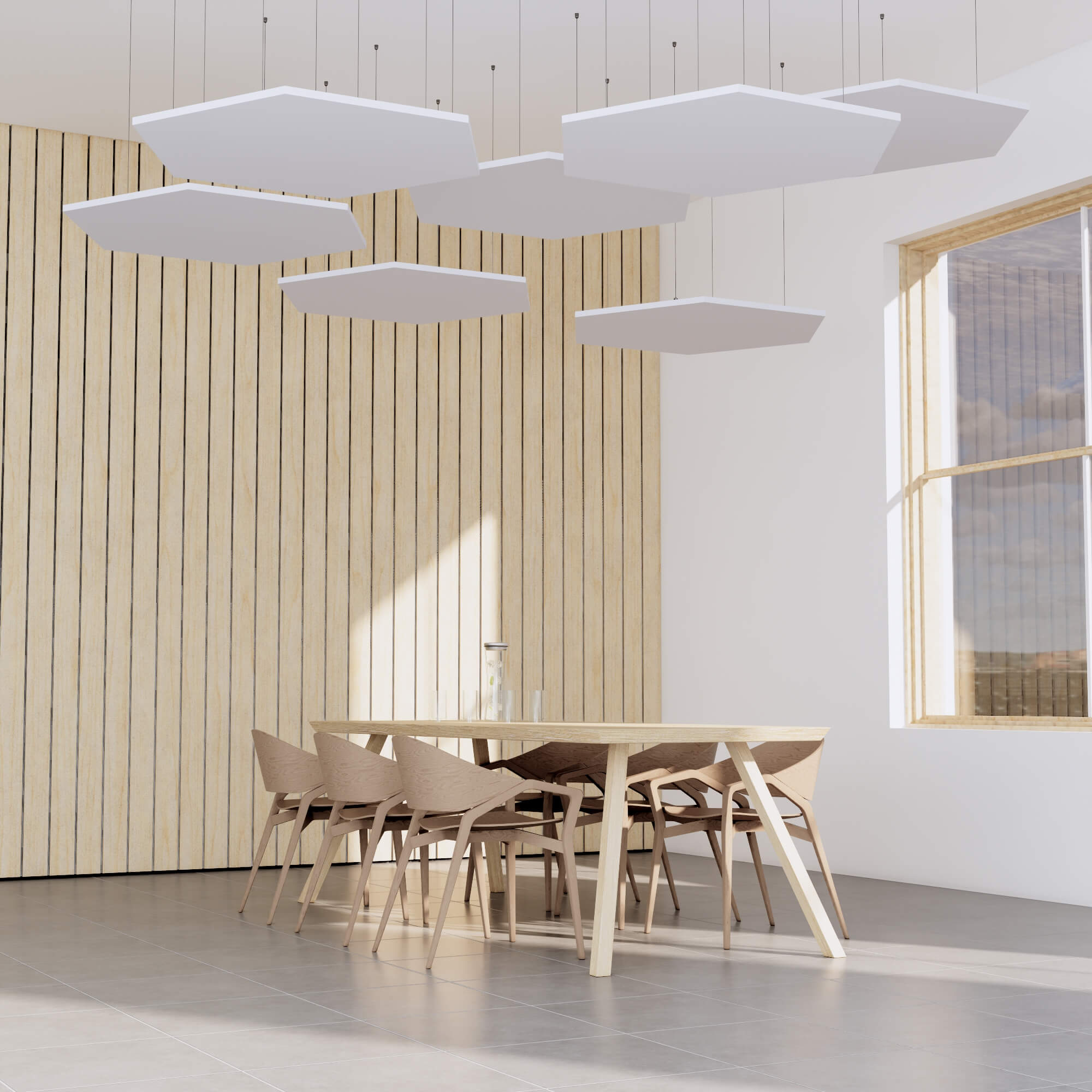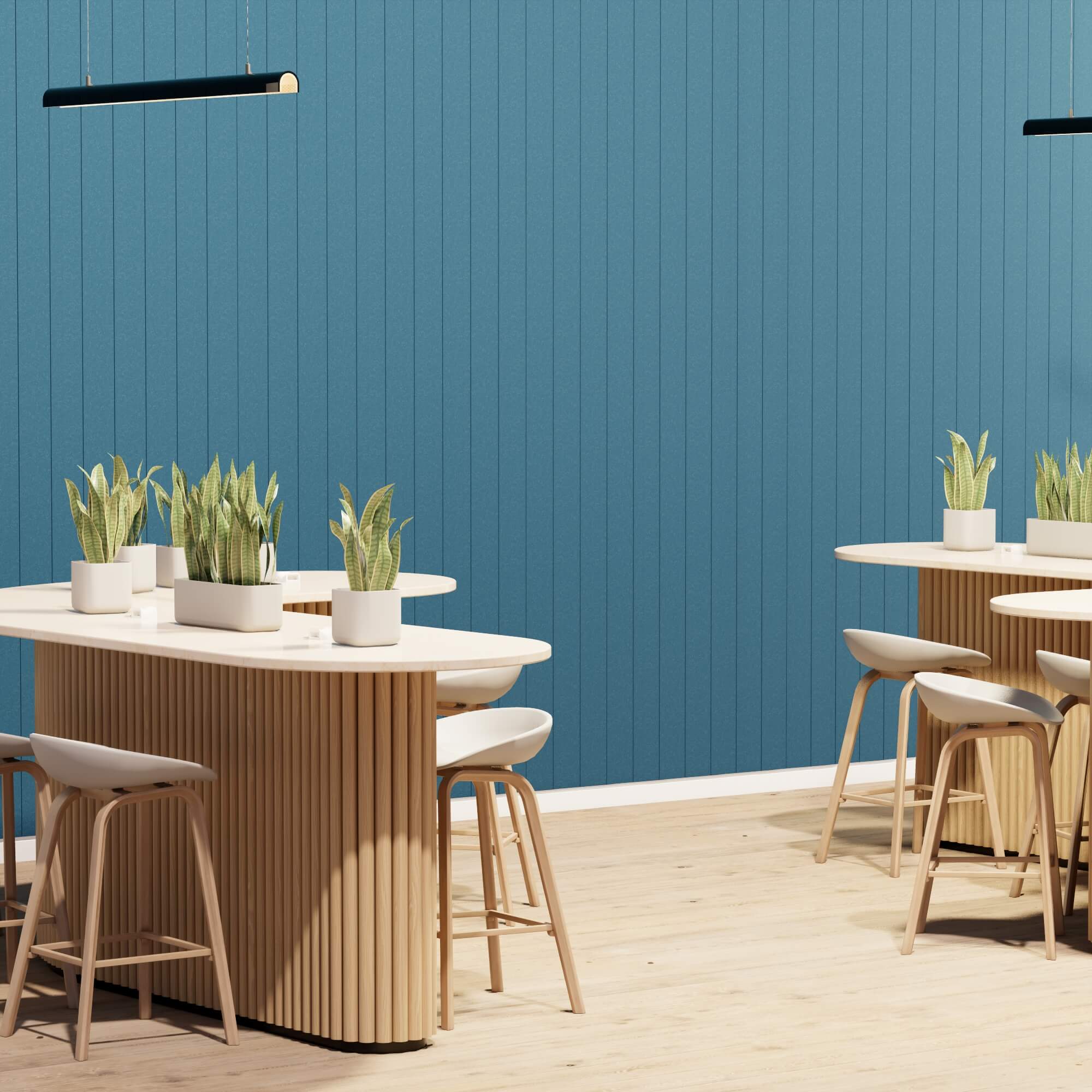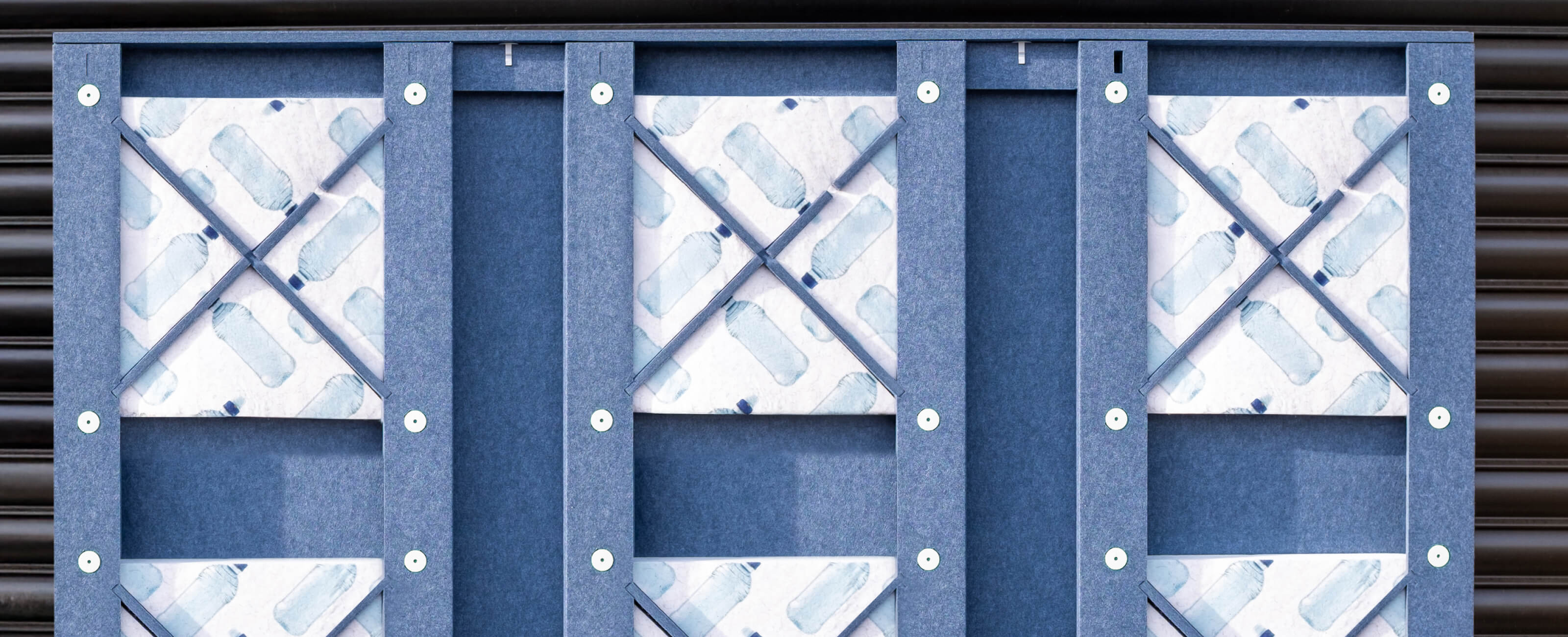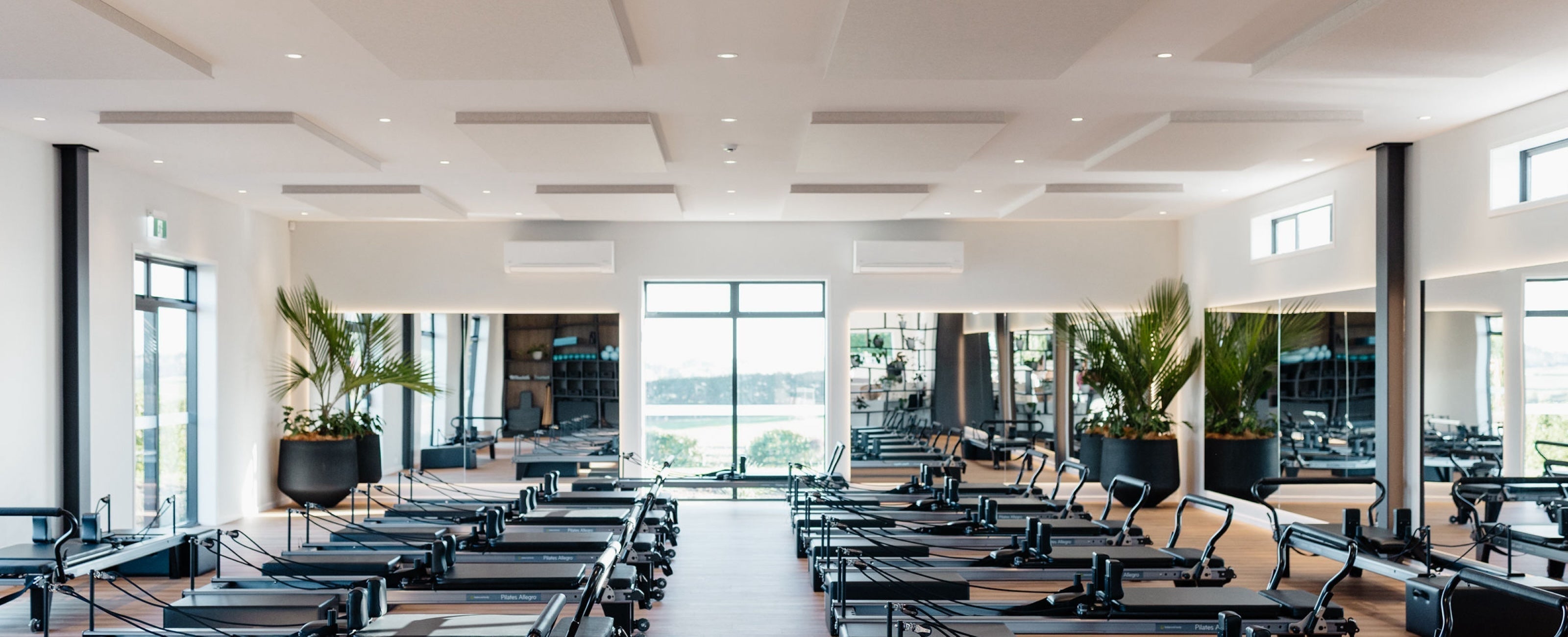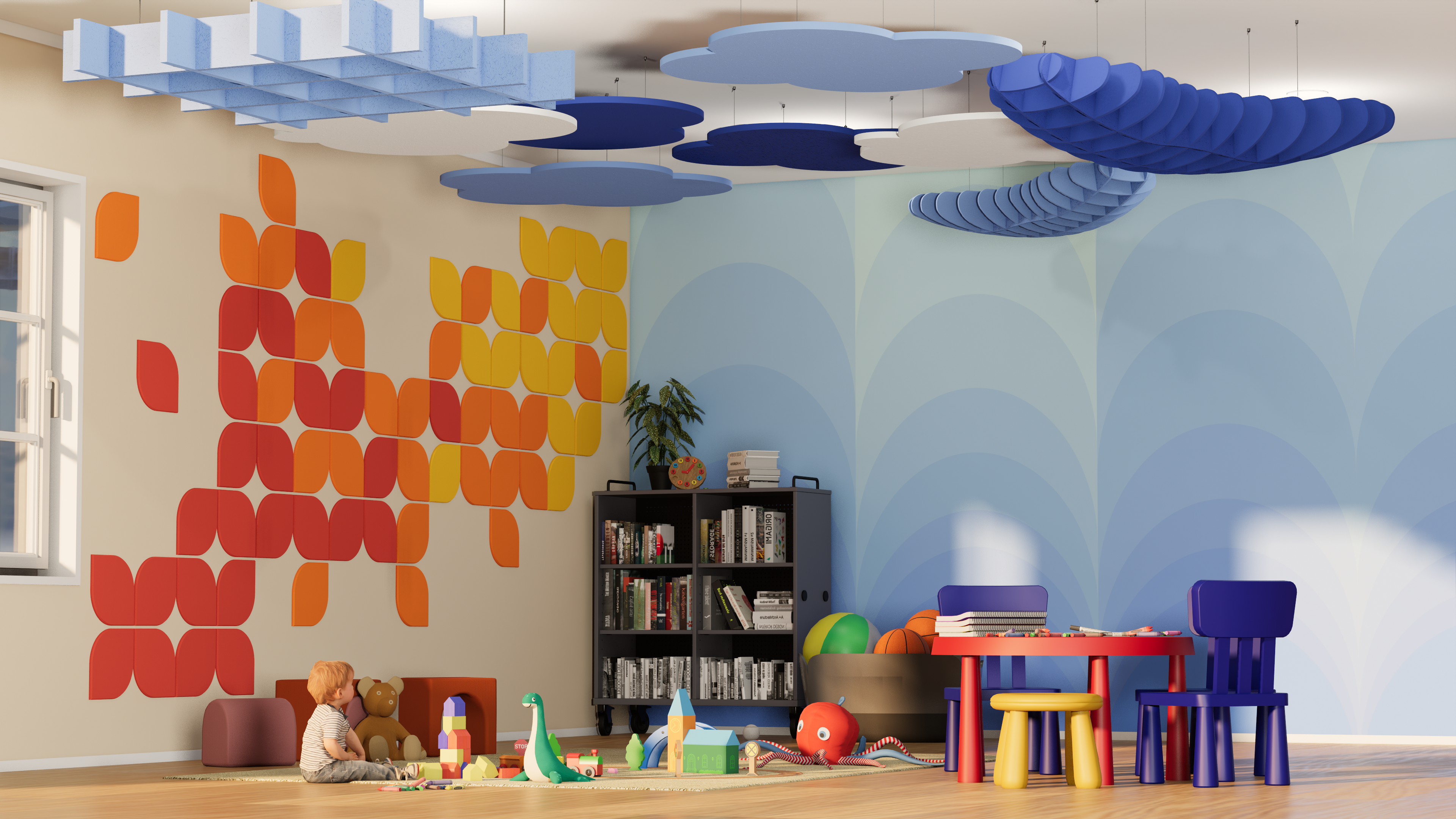Like most people, you may have thought these two terms are much the same. But there are major differences in soundproofing and acoustic treatment.
Soundproofing is preventing sound from coming in and out of a specific space. While acoustic treatment is creating solutions to control or reduce echoes and sound reverberations in a room.
In this article, we will discuss the major differences between soundproofing and acoustic treatment for buildings, and dive into the different solutions for both. But to understand these topics fully, it is essential to know the different routes in which sound travels. We have classified these below:
- Air: Sound is a type of energy generated by vibrations. These vibrations cause sound waves that are able to travel through different mediums. Air is the easiest medium for sound waves to travel through as there is little resistance from molecules. Acoustic solutions can control the way sound travels through the air in a specific space.
- Solid: Sound vibrations can also travel through solid structures. Vibrations cause molecules in a solid foundation to transmit the sound energy until the energy runs out. Low-frequency sounds, like bass from speakers, lose less energy when traveling through solids, which is why soundproofing is needed.
Acoustic Treatment
Acoustic treatment is the process of improving the sound properties of a room to create clarity. When a space undergoes acoustic treatment, it is to control the echoes or reverberations of sound in that space. Usually, the process is intended to reduce these sound characteristics, but in some cases, like a performance hall, it is to enhance the acoustics.
Sound characteristics can be divided into three parts. First is Reflection, where sound bounces off a surface and changes its direction. Second is Reverberation, an accumulation of sounds, where different reflections come together at once, causing poor sound quality or an echo – not ideal for a workspace or business. Lastly, there is Resonance, this is the annoying background noise that creates a far from optimal work environment.
At dbsorb we use two main processes to improve the acoustics in a room. These are:
Absorption: Preventing unwanted reflections from bouncing back into a certain space. These reflections if properly absorbed, improve the acoustics in the treated area.
Diffusion: This method involves scattering the unruly sound reflections into different directions of the room. This reduces the negative effect the reflections might have had. The materials used for diffusion are usually rigid and thick with different patterns.
Acoustic Solutions For Your Home or Office
Your home or office is a space that people should enjoy being in. At work, you want your employees to be focused and productive. At home you want people to relax and converse with ease. Acoustic solutions can make that a reality.
By reducing the naturally occurring sound reverberations in your home or workspace, your space will be more enjoyable for those in it. But how can you tell if you need acoustic solutions? There are two simple options to test your home of office acoustics:
1. Evaluate the Room Yourself
A good way to do this yourself is to clap your hands in the specific room and listen to the reverberation. You will usually hear one of two things. Bad acoustics; a harsh metallic sound which usually occurs in small rooms. Or, Good Acoustics; a pleasant sound which occurs in rooms with high walls and high diffusive capacity.
2. Get a Free Acoustic Audit and Consultation
If you would prefer to get professional advice on the acoustics of your space. Let the expert team at dbsorb come out and give you a free consultation. We will develop an acoustic solution that is tailor-made to your needs and recommend the acoustic material needed for the best results.
If you find your home or office will benefit from acoustic treatment, dbsorb can design high-performing acoustic materials that are unique to your space. We focus on three main elements when improving the acoustics of a room:
- Acoustic Panels
- Acoustic Ceiling Tiles
- Bass Traps
Acoustic Panels
Acoustic panels are a great way to absorb sound in a space without sacrificing the design or style. Acoustic panels can be used on walls, ceilings, or as separators between spaces. No longer are acoustic panels clunky and old-fashioned looking. They can completely change a space, making it look more modern while inspiring creativity and improving the acoustics.
Our acoustic panels are designed and engineered with your space in mind. Each project is unique, so our panels come in all shapes, sizes, and designs. Dbsorb’s acoustic solutions will revolutionize the sound of a room without ruining the style.
Acoustic Ceiling Tiles
If you have a smaller area that needs sound control, like a meeting space, or reception area, acoustic ceiling tiles could be the solution you are after. With a range of shapes, colours, and styles, you can customize your ceiling or wall, and have sound control right where you need it. Tiles provide you with a little more customization than acoustic panels and bass traps. You can even stay on brand and have your business colours or logo printed on them.
Bass traps
These are the main elements for acoustic treatments. They are often referred to as broadband absorbers and can absorb sounds at most frequency levels. In smaller rooms where there is a problem of low frequency, we advise clients on the best bass traps for their needs.
Suggestions for Soundproofing
How can you prevent sound from exiting a space and disturbing those around it? And how can you keep sound out of a certain space to prevent distraction or poor sound quality? We have five suggestions for soundproofing a space:
Adding Mass to the structure of the room
- Decoupling
- Damping
- Sound Absorption
- Filling Air Gaps
Adding Mass to the Structure of the Room
A great way to prevent inward and outbound noise is by adding mass to the walls of the room. This converts the sound energy to heat. It prevents the wall from vibrating despite the high amount of sound energy it is receiving, keeping the sound in.
A method used to determine the effectiveness of materials at soundproofing is called the ‘Sound Transmission Class’. According to this classification, harder materials have a higher STC, while softer materials have a lower STC. From this classification, we can assess that an STC of:
- 20-30 is poorly soundproofed
- 30-40 is average for soundproofing
- 40-50 is good for soundproofing
Decoupling
One way to completely soundproof your room is to decouple it. To do this, you need to separate the structure to prevent sound from crossing to other parts of the structure and escaping. Methods of decoupling which could be used:
- Building insulating layers to form a floating wall.
- Building a floating floor with the use of rubber insulators.
- Building double walls to help block the sound.
Damping
This is a method similar to adding mass. This method removes the energy from the sound waves and converts it into heat. This involves using damping material between two rigid surfaces and creating a sound barrier that could be added to different areas of the room.
Sound Absorption
In this method, the walls of the structure are covered with a material that absorbs sound. This ultimately reduces the level of sound that passes through the structure.
Filling Air Gaps
This is an important way to prevent noise from entering and leaving your room. The use of acoustic caulks and foam gaskets help to seal up the spaces in the room increasing the amount of insulation and reducing noise.
Contact the Team at dbsorb Today
Our team is available to examine your space and develop a unique acoustic solution or soundproofing method that aligns with your specifications. We will provide acoustic or soundproofing materials that are fast and easy to install, and add style to your space.
 Skip to content
Skip to content
